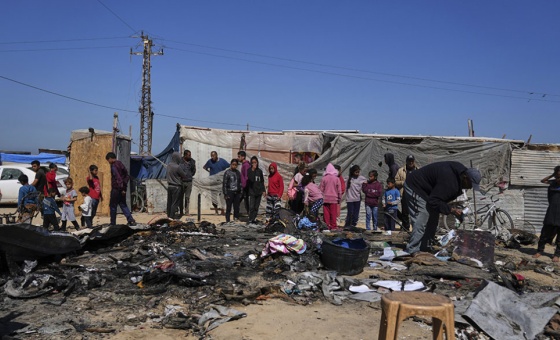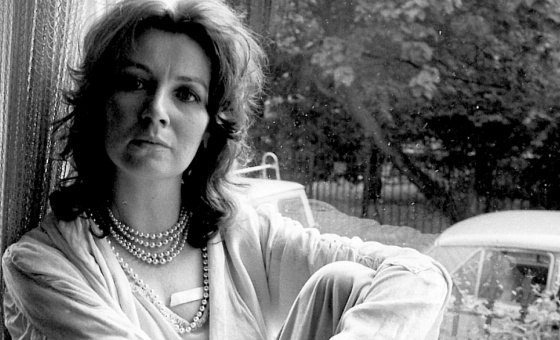This is the last article you can read this month
You can read more article this month
You can read more articles this month
Sorry your limit is up for this month
Reset on:
Please help support the Morning Star by subscribing here
The Hotel
Daisy Johnson, Jonathan Cape, £14.99
Barrowbeck
Andrew Michael Hurley, John Murray, £16.99
THESE books share a common origin. Commissioned as story sequences for Radio 4 by BBC producer Justine Willett, they were read by a distinguished cast of voice actors.
There are further similarities. They use the imagery and atmospheres of contemporary folk horror — a sense of foreboding, ambiguous perceptions, undercurrents of violence and a collision of the mythic with the mundane — to explore the influence of landscape on psychology.
Furthermore, both books focus on single locations and present a view of history in line with the fabulist Russell Hoban’s assertion that “the past is something that sticks to your shoes like cow shit.”
Set beneath the vast and ominous skies of the East Anglian fens, the stories in The Hotel are laconic in tone and gothic in terms of aesthetic influence. A prologue blending poetry and reportage suggests we’ve strayed into an afflicted zone. Daisy Johnson introduces motifs that recur throughout the cycle of 14 tales, such as the occult menace of the number 63, and variations on the cryptic refrain “be there soon.”
The opening story, The Witch is set in a rural community — on the future site of the eponymous hotel — and crammed with potent imagery. For example, the narrator attributes her powers of prophecy to life in a farmhouse that “sits like a sullen demon … and draws the knowledge from me.” There are echoes of The Wicker Man and Shirley Jackson’s classic tales of claustrophobic horror, but Johnson is concerned with “othering” and society’s oppression of women.
Each story stands alone, but they are presented in an order reflecting the lifespan of the hotel. The second, The Build, is related by a female construction worker. Gritty and dreamlike by turns, it chronicles the hardships and hauntings of a team laying the building’s foundations.
The final tale, The Film, describes the exploration of the now abandoned hotel by three young women and, eventually, its destruction. The narrative voice is fragmented, referring to found video footage, Word documents and emails. This works well, but Johnson’s mysteries and allusions are undermined by blatant exposition of what cannot be seen in the film and files.
There are several standouts in this strong collection. The Wedding begins with bleak but amusing observation and segues into a chilling metaphysical encounter. It is touching, unsettling and brilliantly controlled. In Conference, a robust satire of power and sexual predation, the supernatural seeps into quotidian reality.
Stories are linked by events and symbols — some overt, others oblique. People cast as extras in one narrative take centre stage in another. Those who suffer and die in the hotel are doomed to haunt, touch and distress those who come later, whether as guests, workers or explorers. Some escape the confines of the building but are fated to return. As The Eagles sang about another sinister hotel: “You can check out any time you like, but you can never leave.”
Like The Hotel, Andrew Michael Hurley’s Barrowbeck is a collection of thematically linked and historically sequenced stories. It is marketed as a novel, which is odd because each of the 13 tales has a distinct narrative arc and can be enjoyed on a standalone basis. While they are set in specific periods, I’d argue they can be read in any order. It would be understandable, but a pity, if this classification as a novel was adopted simply due to the challenge of selling short fiction collections.
Set in a remote valley on the Yorkshire-Lancashire border, the book opens with First Footing, an undated account of a Celtic tribe seeking sanctuary while fleeing Anglo-Saxon invaders. A consultation with the gods suggests they can stay in the valley on condition they accept they are servants of the land and not its owners.
This eco-fictional motif recurs throughout the book, and is resolved in the final tale, A Valediction, set in 2041. In this, two environmental inspectors travel to the valley, flooded after years of relentless rain, and discover the submerged and floating detritus of earlier generations. This, it seems, is nature’s retribution for the betrayal of the Celtic tribe’s compact with the gods.
Several stories make an enduring impression. The Strangest Case (1792) and After the Fair (1899) deal with abuses of power and the clash of rationality and superstition. There’s a disturbing take on the toxic interaction of poverty and charity in An Afternoon of Cake and Lemonade (1970). In The Haven (1984), a scene of bucolic bliss masks the quiet fanaticism of a religious cult.
Johnson and Hurley are concerned with loneliness, alienation and the limits of our ability to understand the world. Both are virtuosos of the vivid and allusive image, rejecting simple allegory in favour of richly textured enigma. These — their new collections of ghost stories and dark fairy tales — are absorbing, unsettling and thought-provoking.







